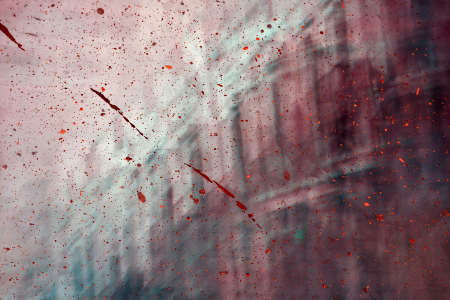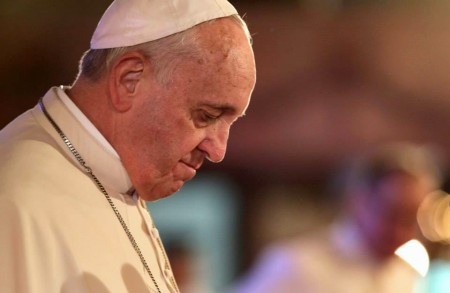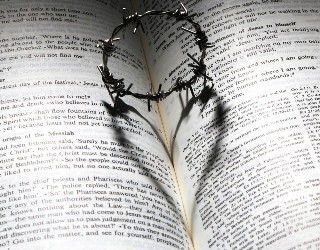Diocese of Winona
FREE Catholic Classes
(WINONENSIS).
Established in 1889, suffragan of St. Paul, comprises the following counties in southern Minnesota : Winona, Wabasha, Olmstead, Dodge, Steele, Waseca, Blue Earth, Watonwan, Cottonwood, Murray, Pipestone, Rock, Nobles, Jackson, Faribault, Martin, Freeborn, Mower, Fillmore, and Houston. The area of the diocese is 12,282 square miles.
The early Catholic voyagers and missionaries visited many parts of Minnesota now under the jurisdiction of the Bishop of Winona. In 1660 Groseiliers and Radisson made a visit to the Prairie Sioux in southern or south-western Minnesota. There are, however, no definite records showing what route they took or how far they travelled; in all probability they followed the course of the Minnesota River. In 1680 Father Hennepin, accompanied by Antoine Augelle and Michael Accault, set out from Fort Creve-coeur to explore the Upper Mississippi. On the Minnesota shore, the territory which they passed on the journey from La Crescent to Lake City now belongs to the Diocese of Winona. In 1683 Nicholas Perrot established a trading-post at or near the site of the present city of Wabasha. With him was the Jesuit Father Joseph Jean Marest who laboured as a missionary among the Sioux Indians. More than a century and a half had elapsed when Bishop Loras, in 1839, journeyed from Dubuque to Mendota to minister to the few Catholics who had but recently settled in that vicinity. In 1840 Father Galtier was sent to Mendota. He was the first parish priest to exercise the sacred ministry in Minnesota. During his pastorate at Mendota, Father Galtier made many visits to Wabasha. Here, in 1839, Augustine Rocque had erected a trading-post. At Mr. Rocque's home Father Galtier assembled the early settlers and offered for them the Holy Sacrifice of the Mass . In April, 1843, Monsignor Ravoux, travelling from Mendota to Dubuque, visited, among other places, Wabasha and Winona. In his "Memoirs" he writes that Winona was then "a prairie without inhabitants". In fact, when Bishop Cretin came to St. Paul as its first bishop in 1851, no systematic attempt at settlement had been made in what is now the Diocese of Winona. On 2 February, 1855, at Mankato, Monsignor Ravoux celebrated what was very probably the first Mass ever offered in south-western Minnesota. In June of the same year Bishop Cretin visited Mankato and organized the parish of St. Peter and St. Paul. Father Sommereisen became its first pastor on 16 March, 1856. Many of the missions in south-western Minnesota were established by the Jesuits, who took charge of the parish at Mankato on 27 January, 1874. In 1856 Bishop Cretin visited Winona and organized a parish for the few Catholics whom he found there. In 1857 he placed the parish under the care of the Rev. Thomas Murray. Monsignor Oster, then a young priest on mission duty in Minnesota, made occasional visits to Winona. In July, 1858, the Rev. Michael Prendergast became the first resident pastor. Besides his duties in Winona, Father Prendergast had charge of the Catholics in Wabasha, Olmstead, Houston, Fillmore, Steele, and Mower Counties. In 1856 Bishop Cretin visited Brownsville, Caledonia, Rushford, Chatfield, Buckley Settlement (now St. Bridget's), and many other places in southern Minnesota. He was the pioneer bishop of St. Paul , and the founder of the pioneer parishes in the present Diocese of Winona.
With the advent of the railroads, southern Minnesota developed rapidly. It is a rich agricultural district, well adapted to the needs of diversified farming. So well did the Church flourish in this section of the state that in 1889 southern Minnesota was made a diocese, with Winona as the episcopal city, and the Rev. Joseph B. Cotter its first bishop. Bishop Cotter was born at Liverpool, England, 19 November, 1844. He was ordained priest by Bishop Grace at St. Paul , 23 May, 1971. Shortly after his ordination he was sent to Winona as pastor of the Church of St. Thomas. With Bishop McGolrick of Duluth and the late Bishop Shanley of Fargo, he was consecrated in the cathedral at St. Paul, 27 December, 1889. He died in Winona, 27 June, 1909. When the diocese was formed, Bishop Cotter had 45 diocesan priests and 4 religious. There were 45 churches with resident pastors, 49 mission churches, 15 stations, and 19 parish schools, attended by 2650 pupils. At his death in 1909 there were in his diocese, 85 diocesan priests and 7 religious; 72 churches with resident priest ; 44 missions with churches; 8 station; 28 parish schools, attended by 4630 pupils. As second Bishop of Winona, Pius X, on 4 March, 1910, selected the Rev. P.R. Heffron, rector of the St. Paul Seminary. Born in New York City in 1860, he spent his boyhood near Rochester, Minnesota. He was ordained on 22 Dec., 1884, and became pastor of the cathedral, St. Paul , in 1889. In 1896 he was made vice-rector and in the following year rector of the St. Pal Seminary. On the day of his consecration as Bishop of Winona, 19 May, 1910, six bishops were consecrated for the Province of St. Paul. Bishop Heffron was installed at Winona, 24 May, 1910. As a monument to the memory of his predecessor he erected in Winona (1911) the "Cotter School for Boys", of which the Christian Brothers have charge. In the fall of 1911 work was started at Terrace Heights, Winona, on the foundation of a college for young men. Bishop Heffron has likewise established a diocesan journal entitled "The Winona Courier", which is published monthly at Winona.









 Daily Readings for Friday, April 19, 2024
Daily Readings for Friday, April 19, 2024 St. Alphege: Saint of the Day for Friday, April 19, 2024
St. Alphege: Saint of the Day for Friday, April 19, 2024 Stewardship Prayer: Prayer of the Day for Friday, April 19, 2024
Stewardship Prayer: Prayer of the Day for Friday, April 19, 2024

